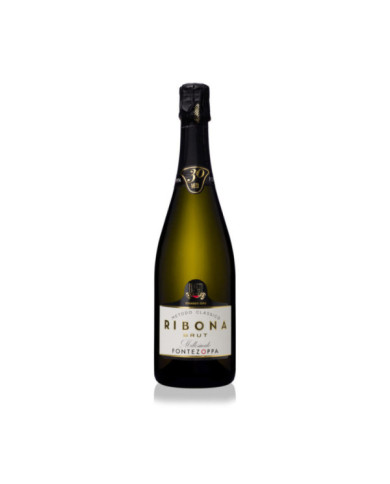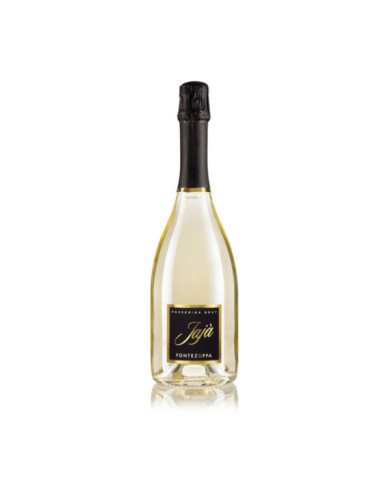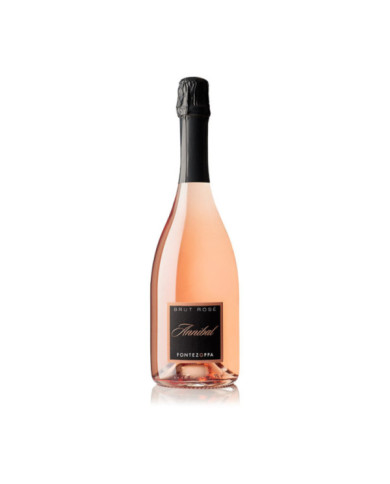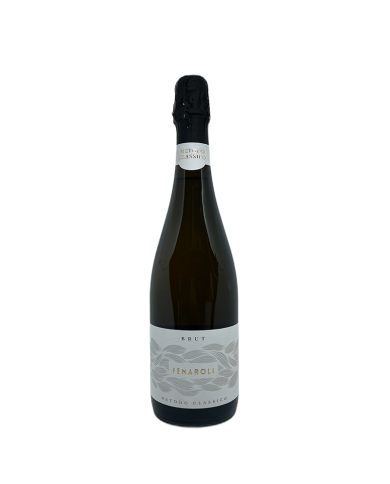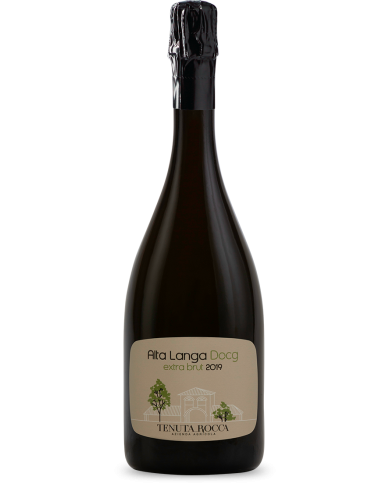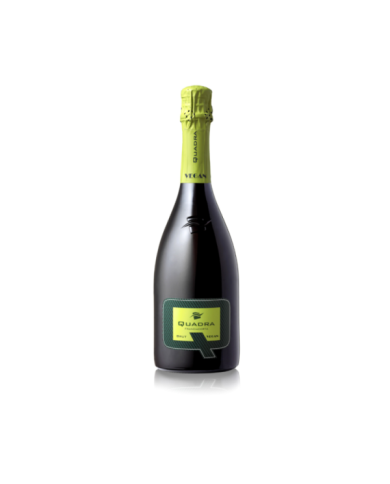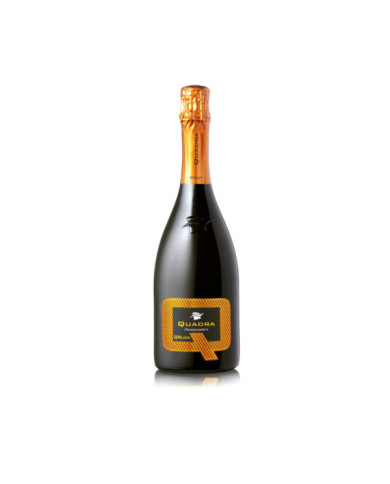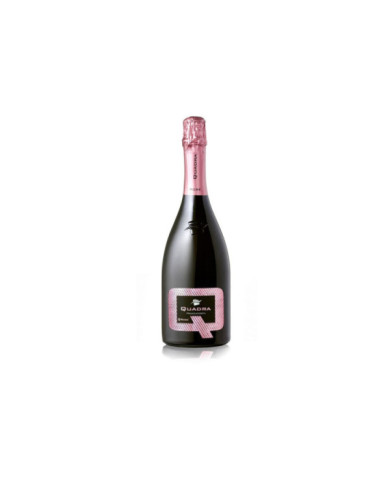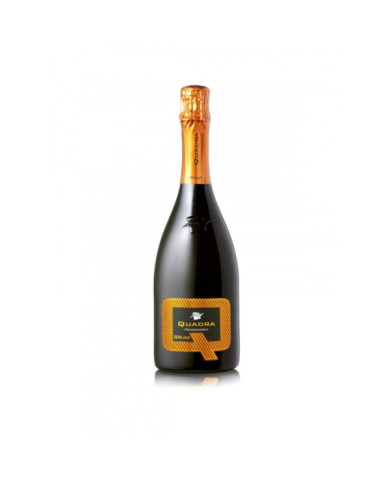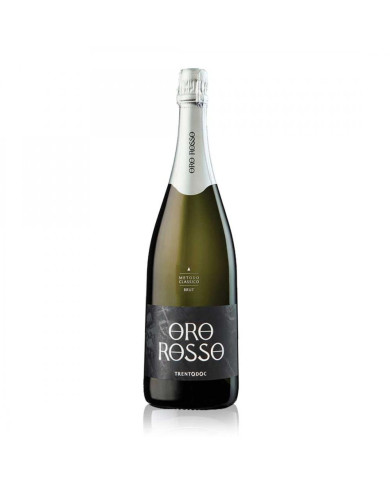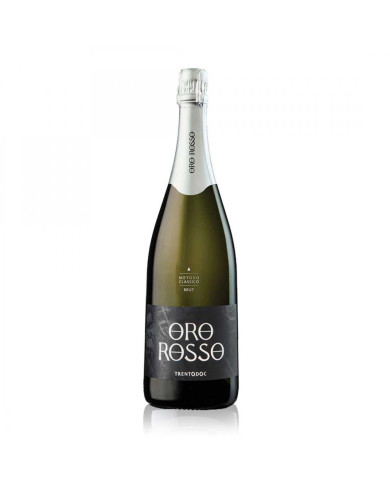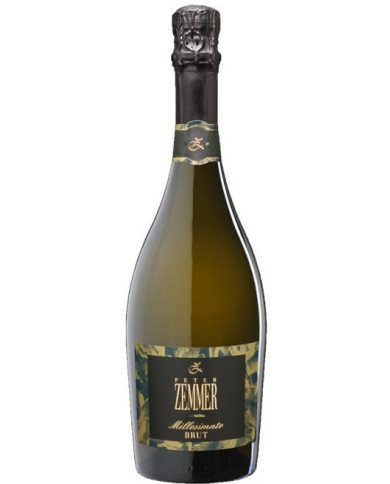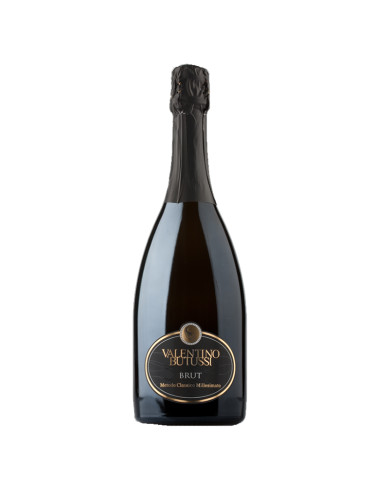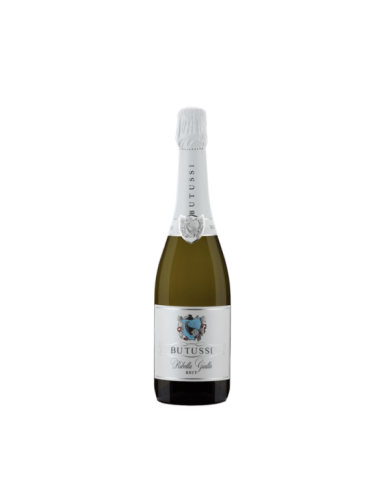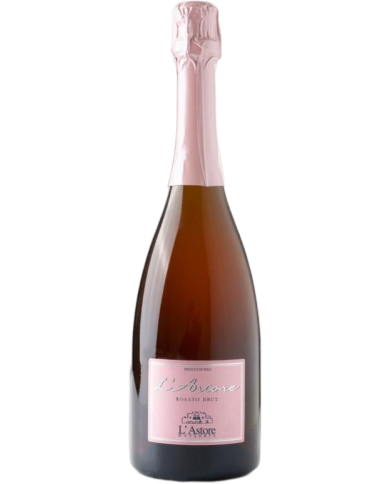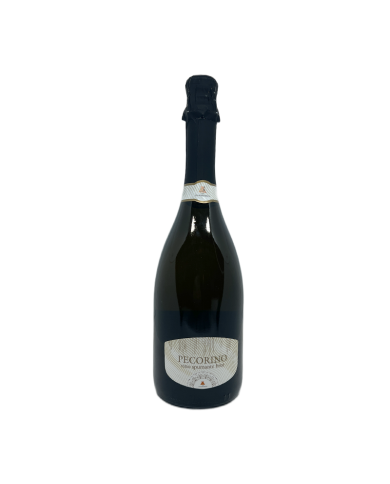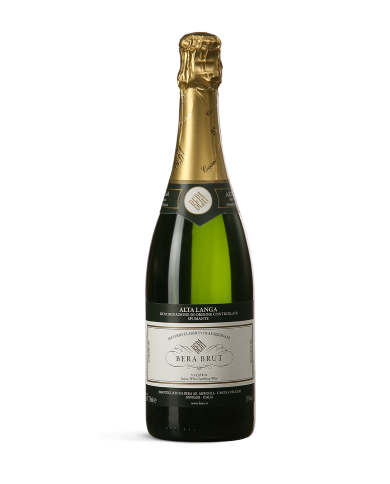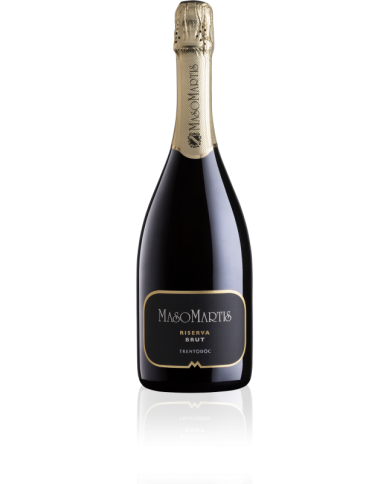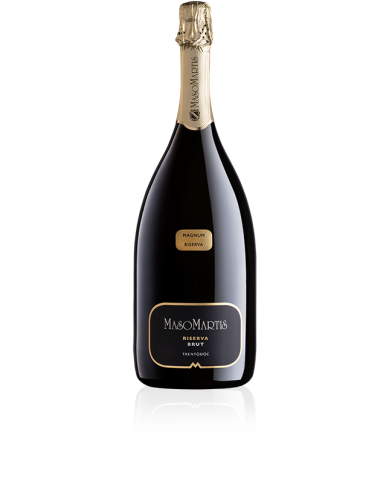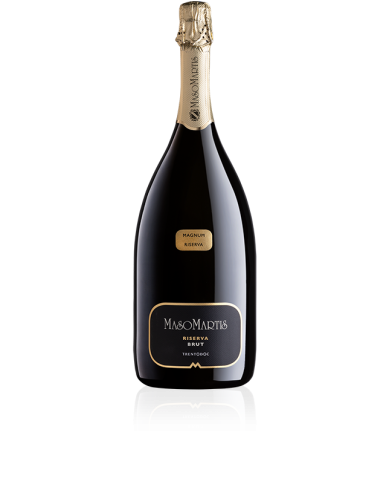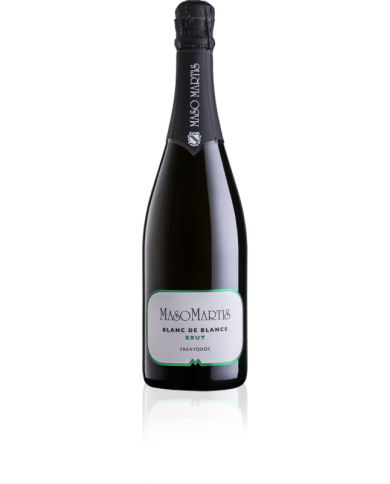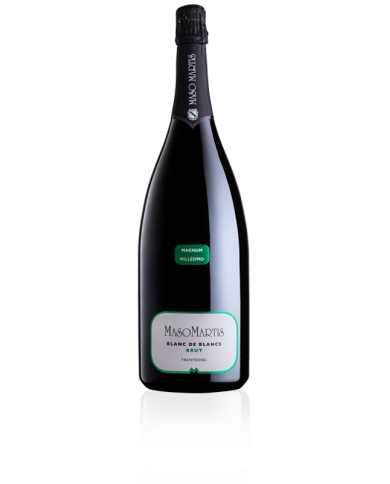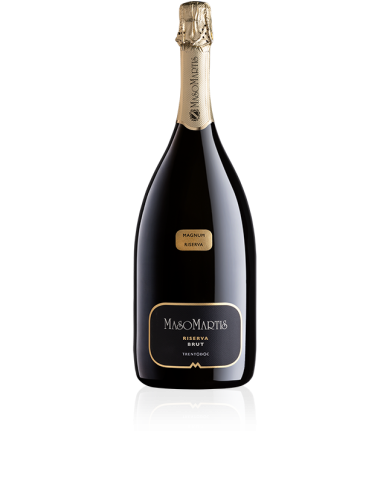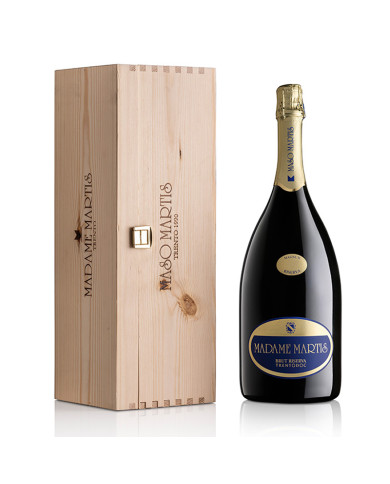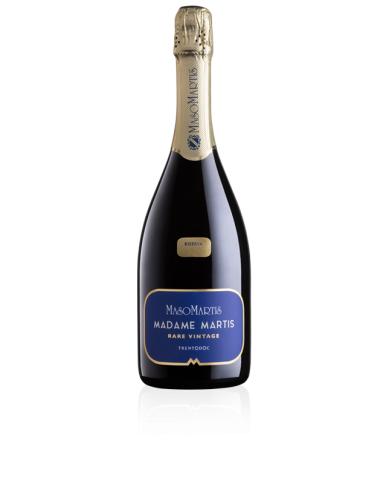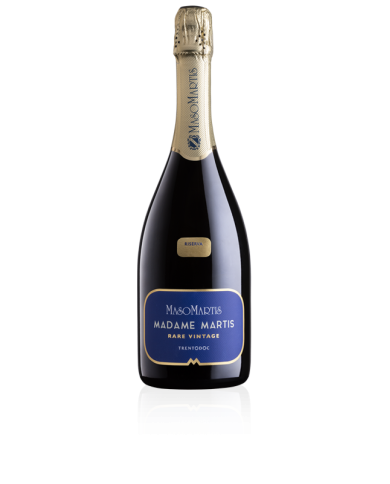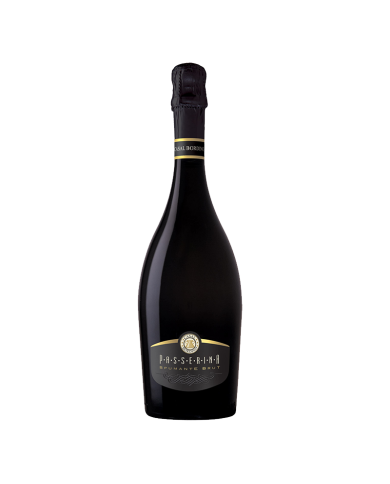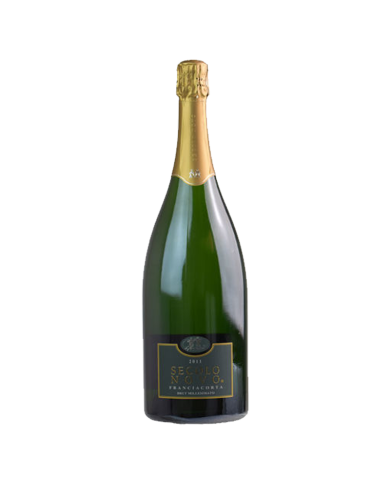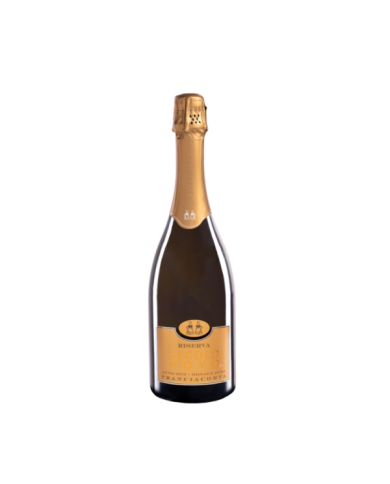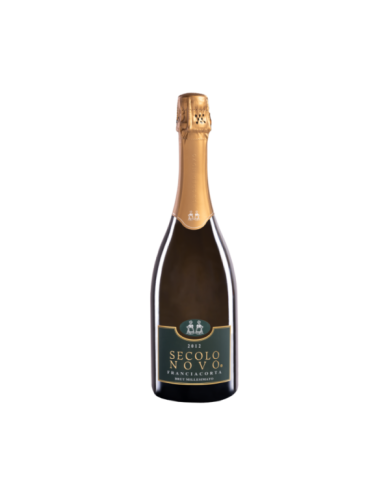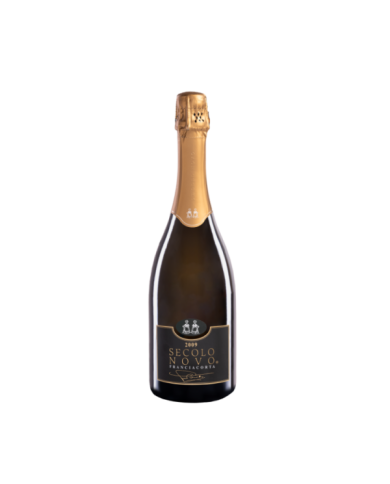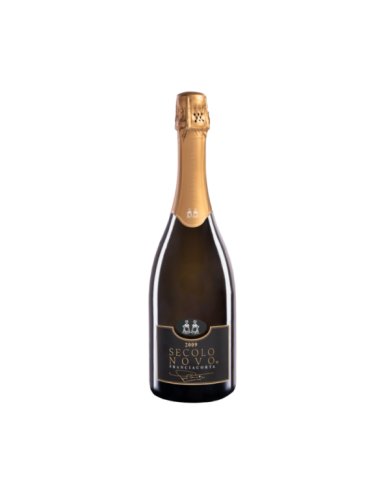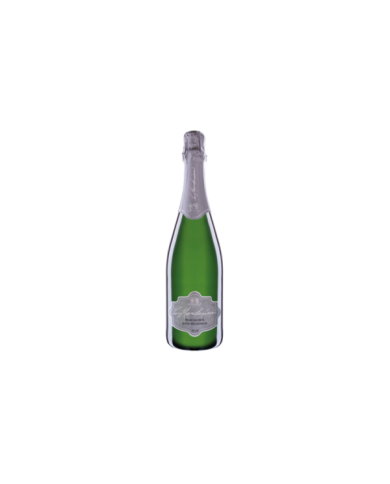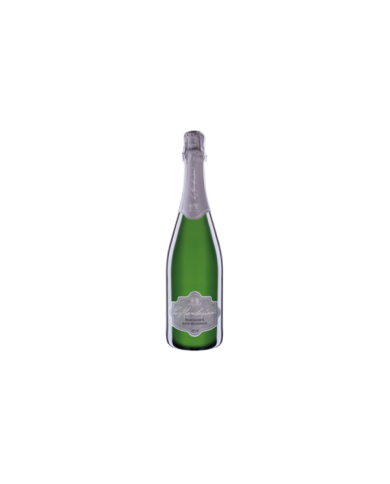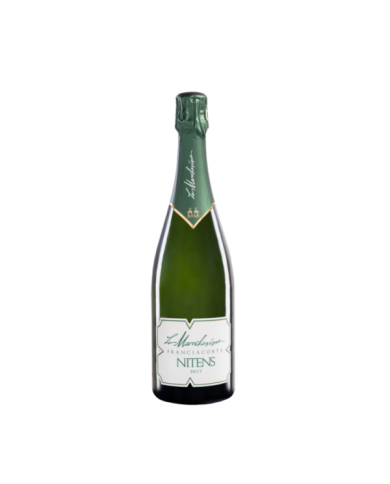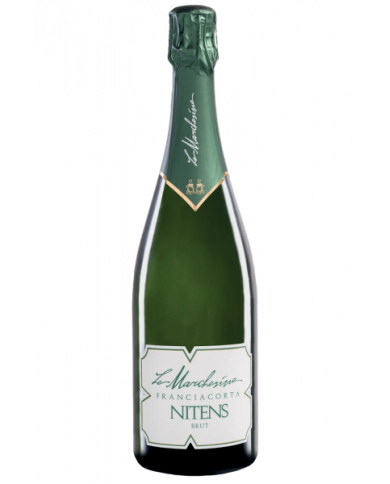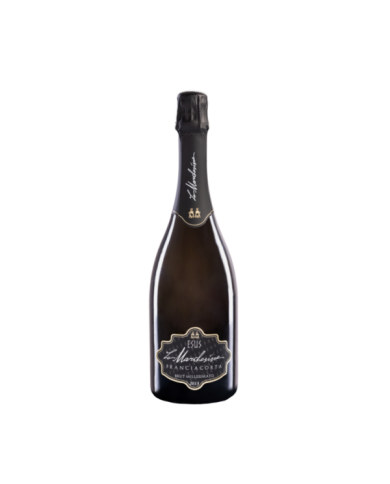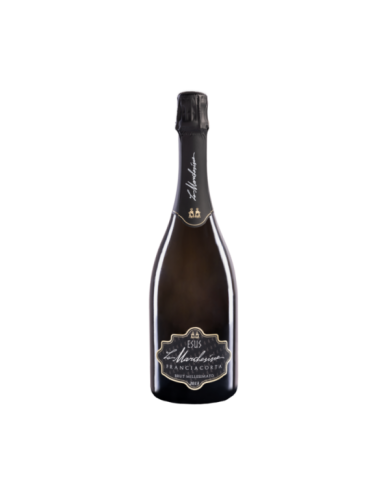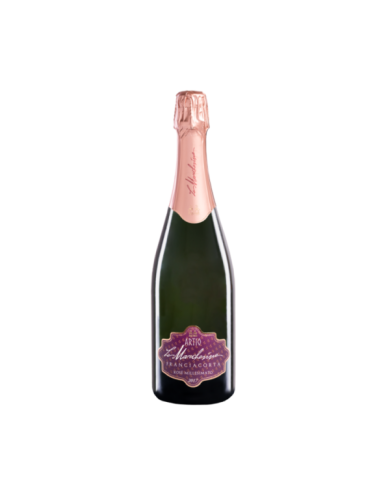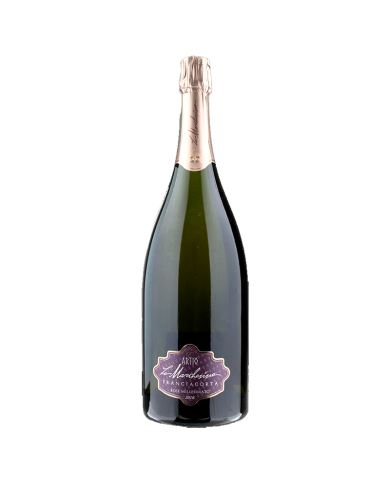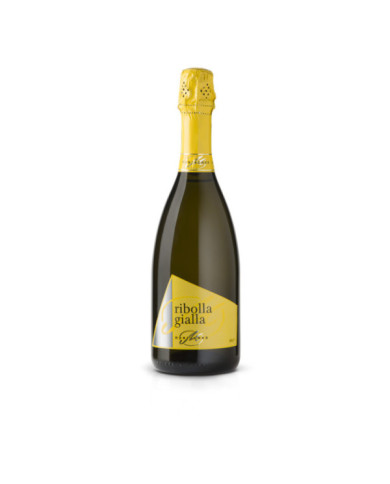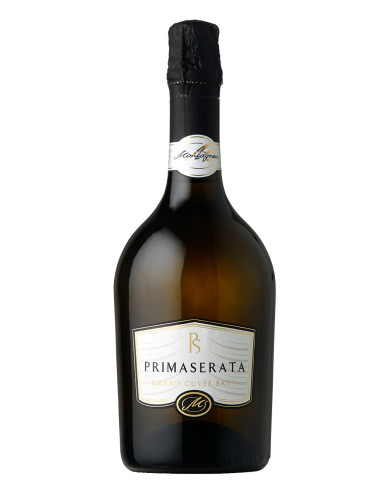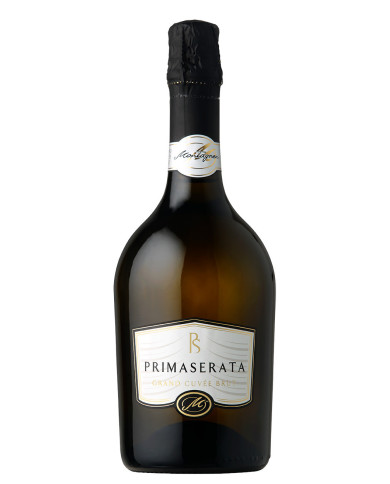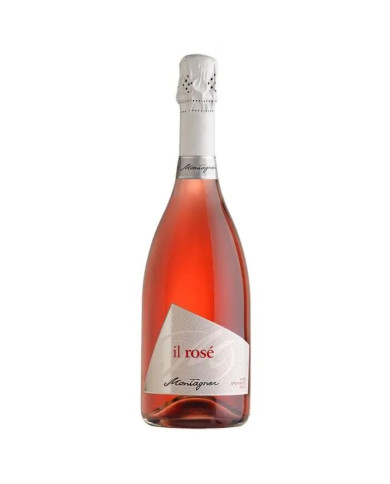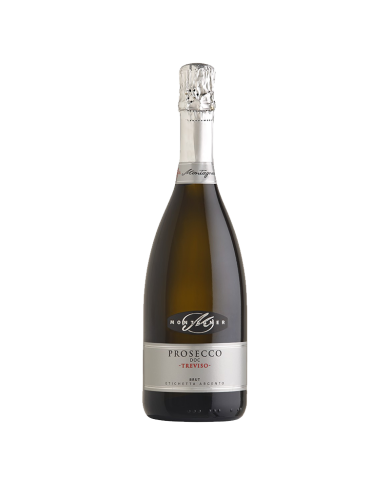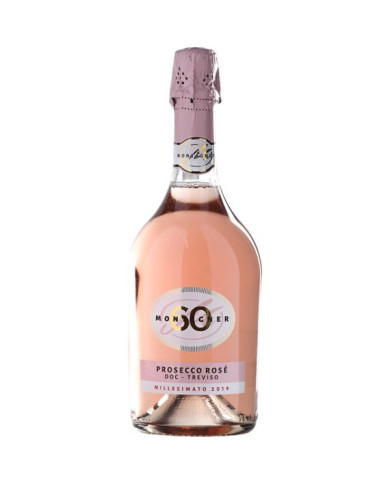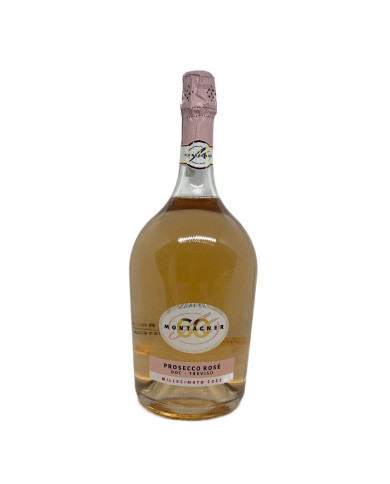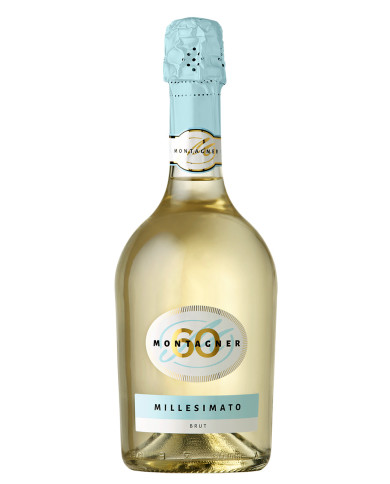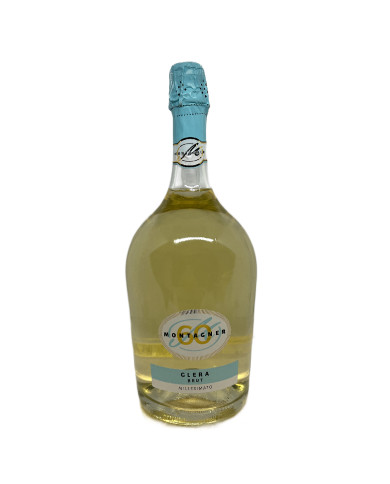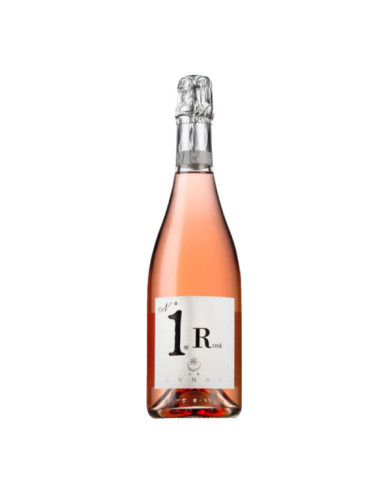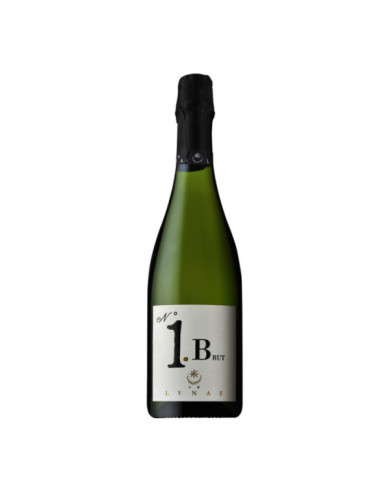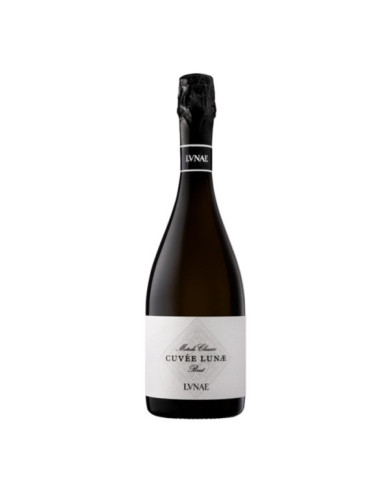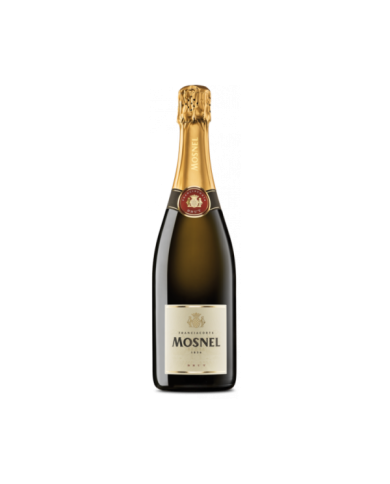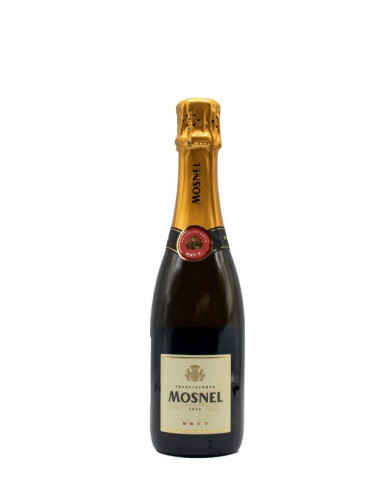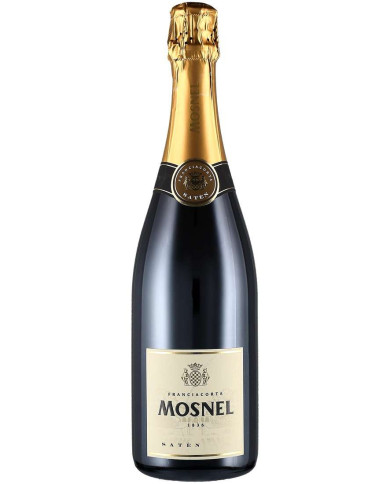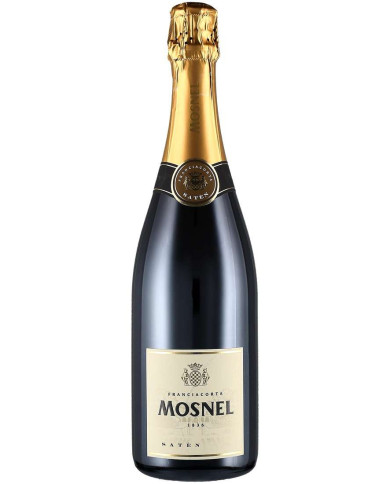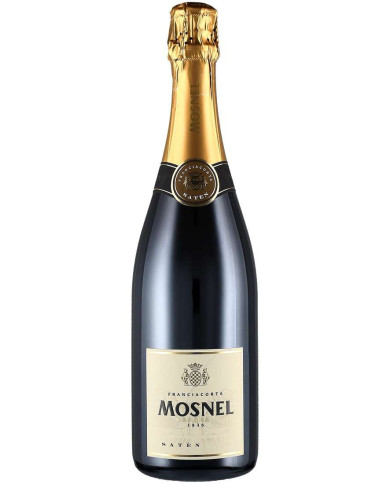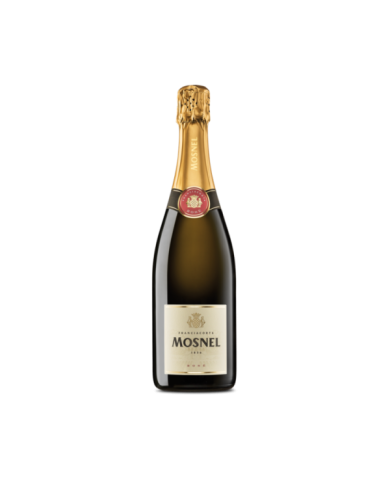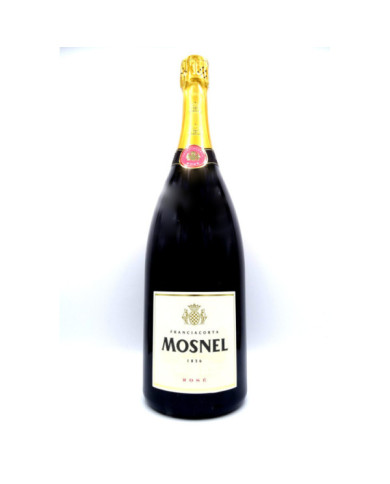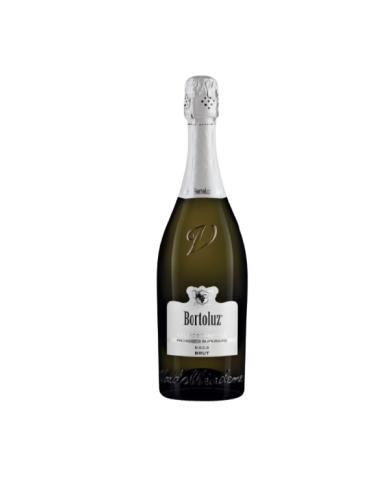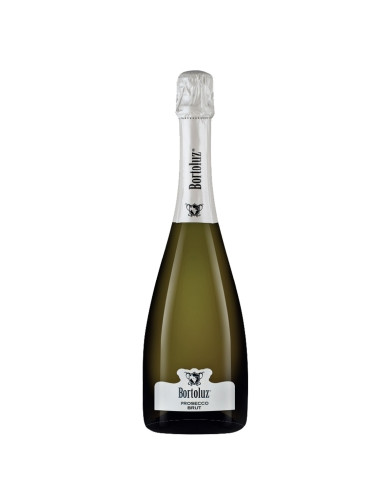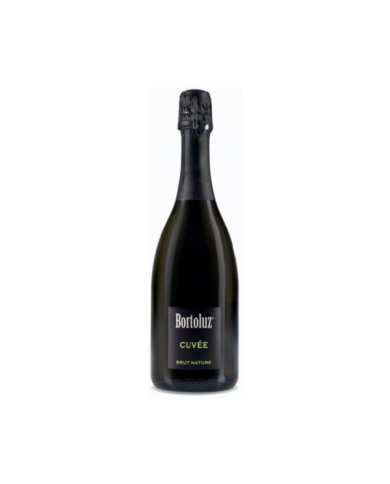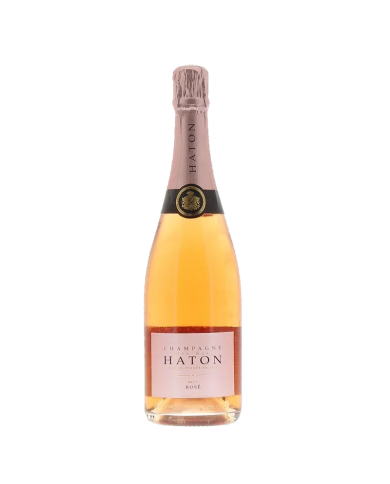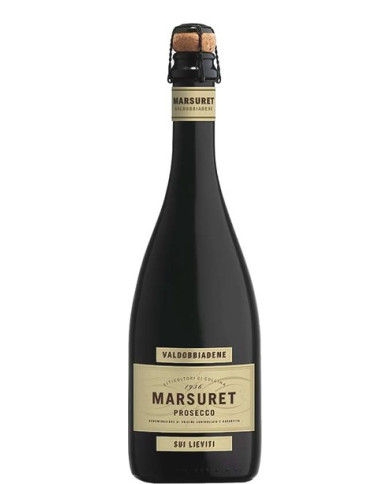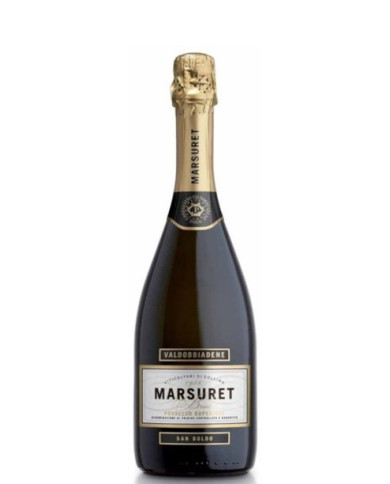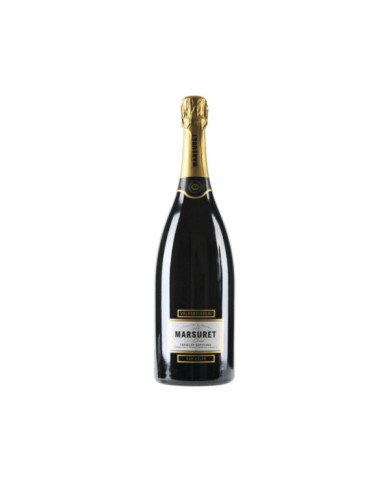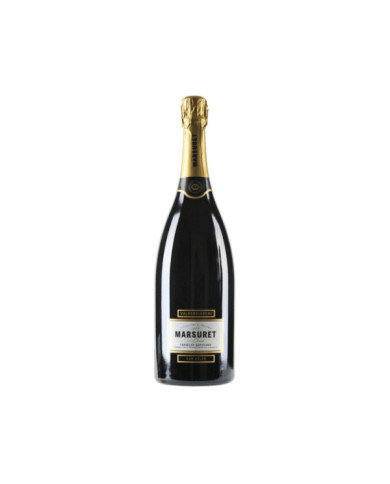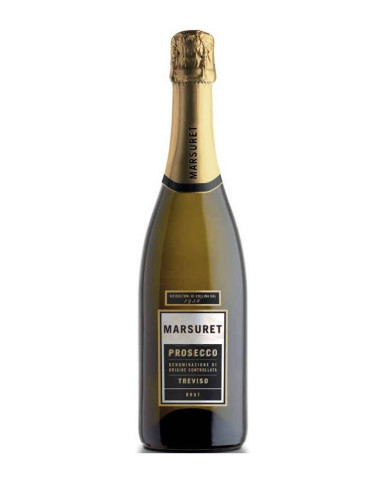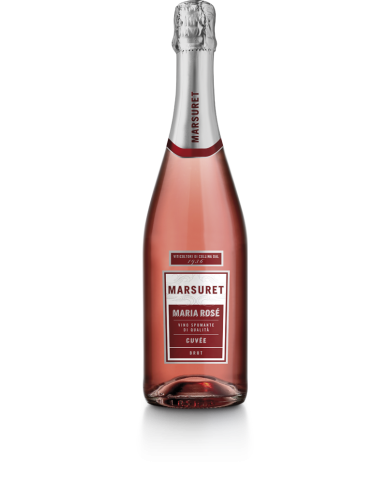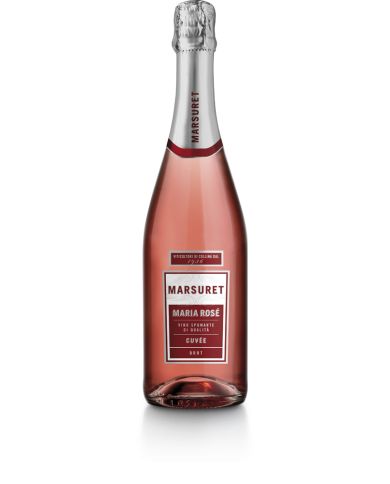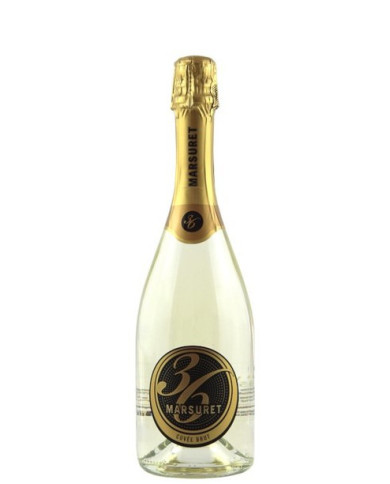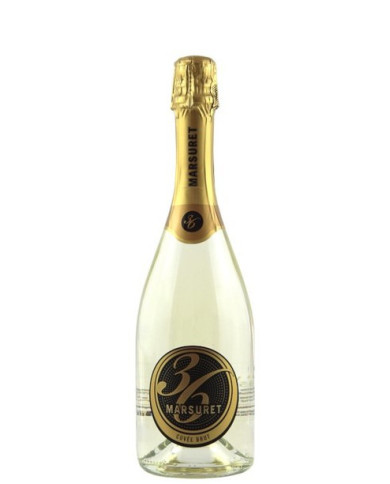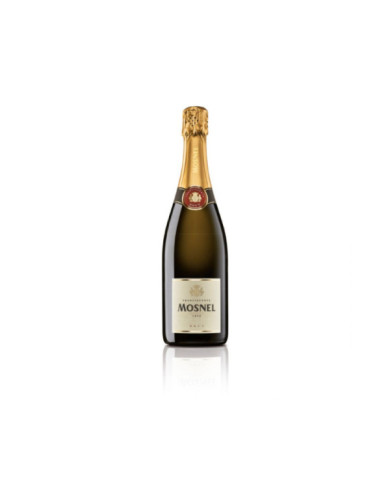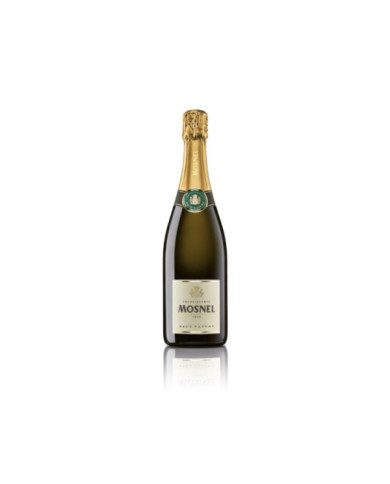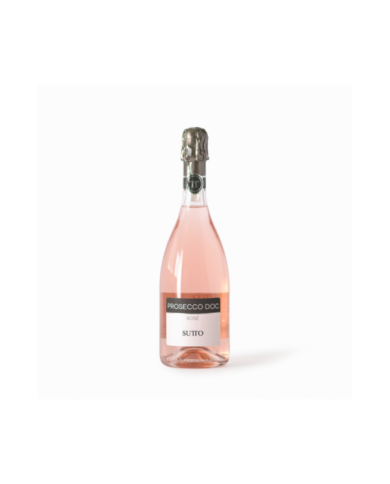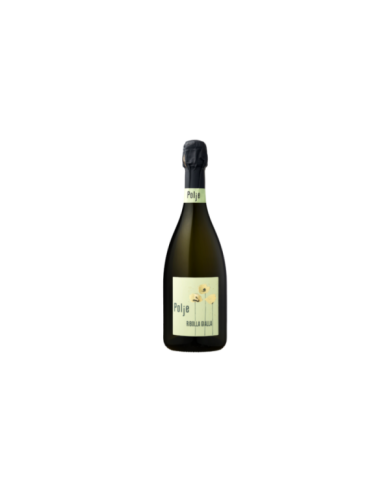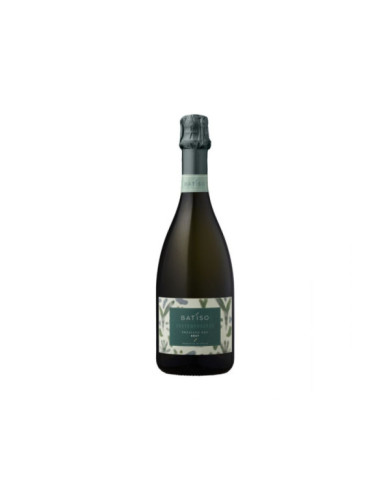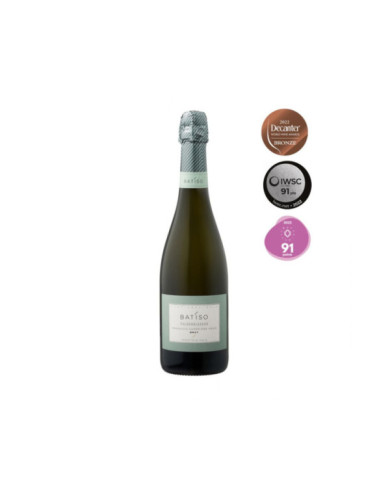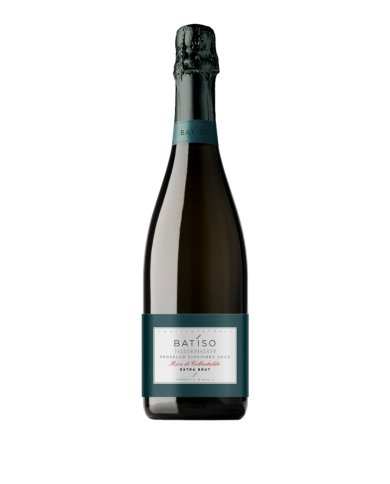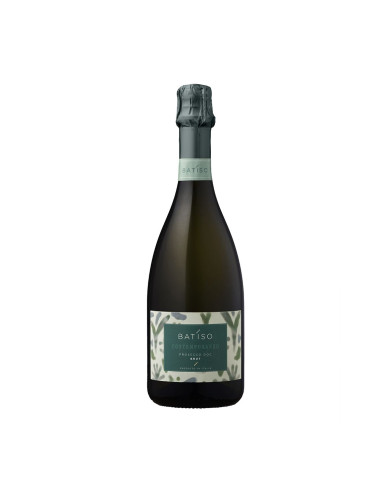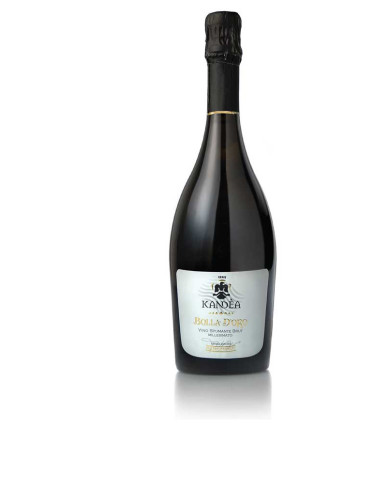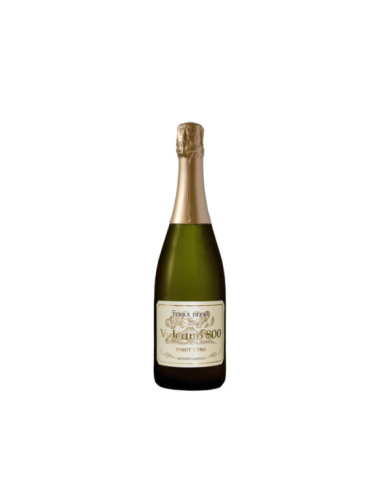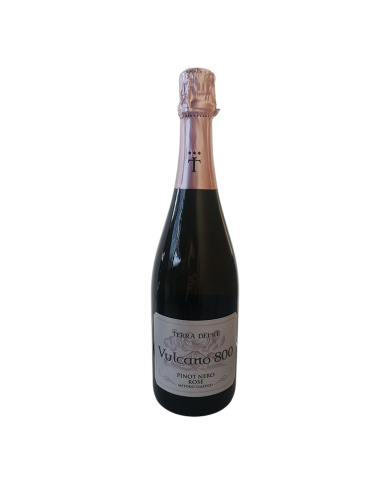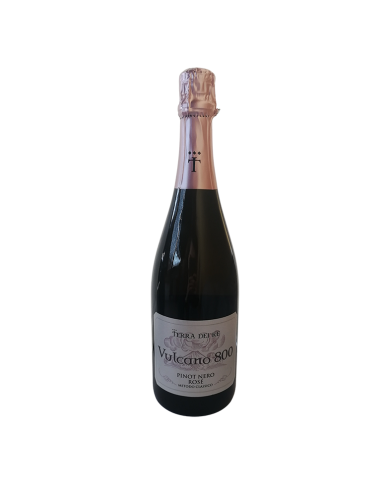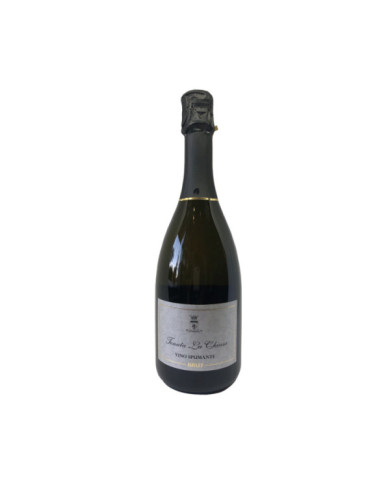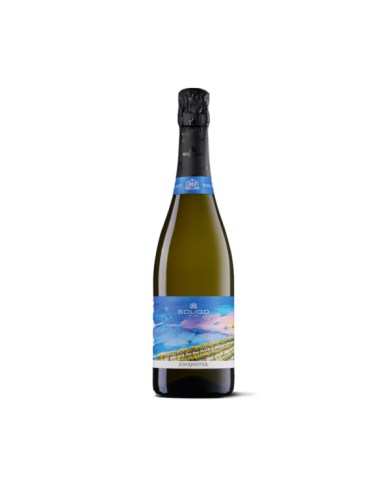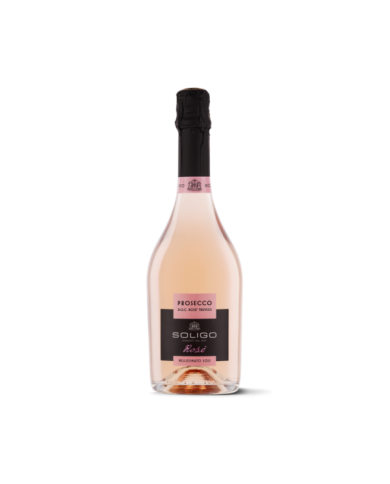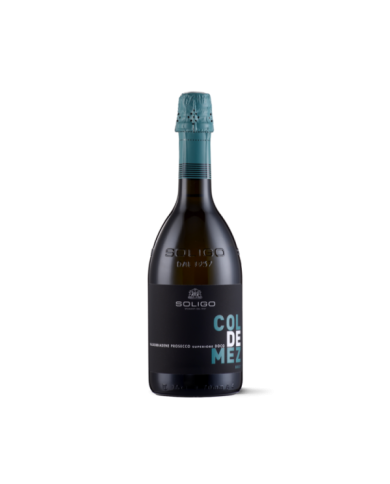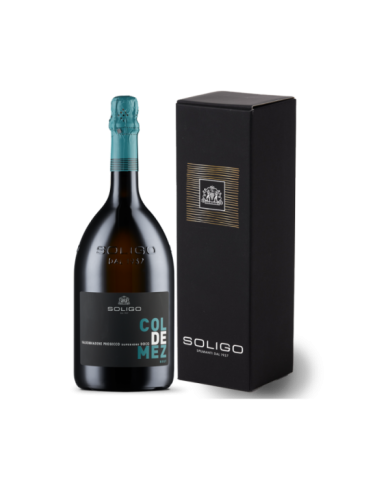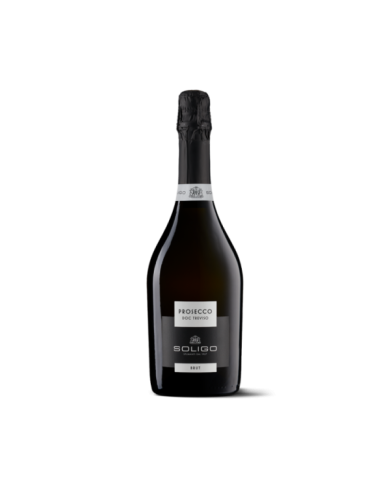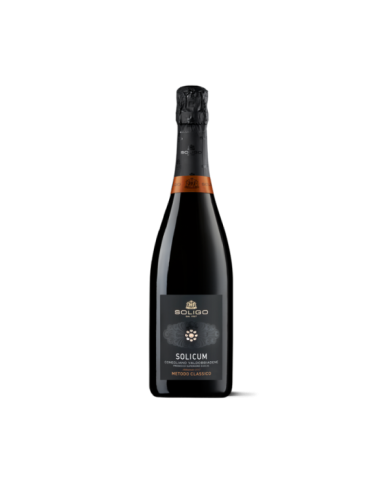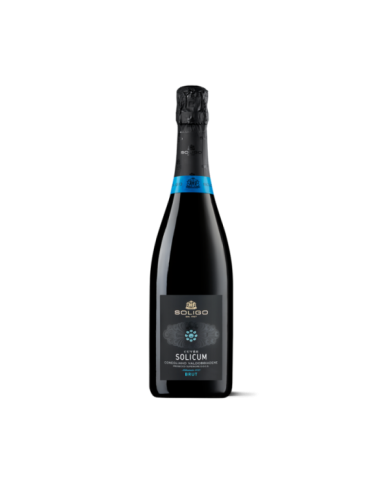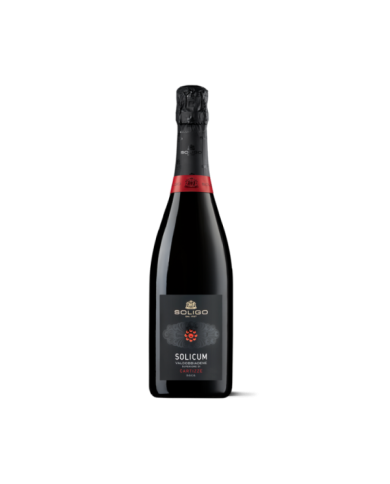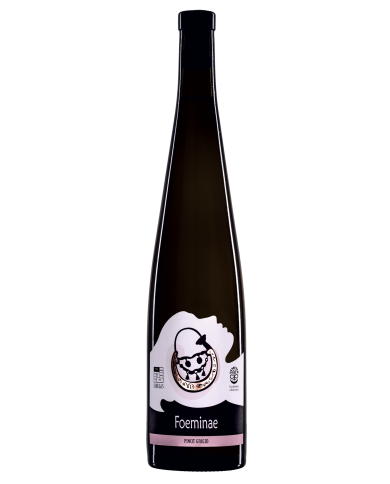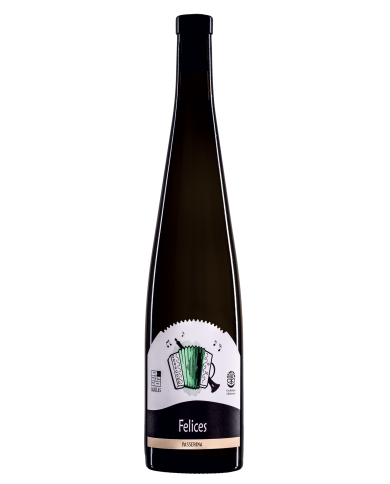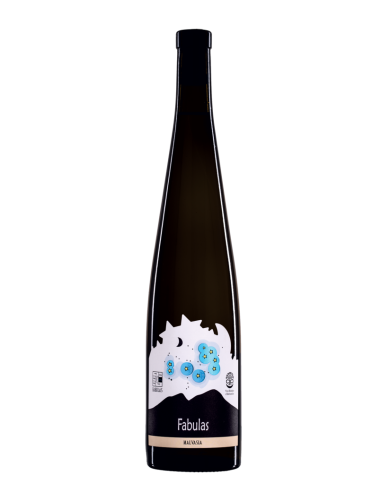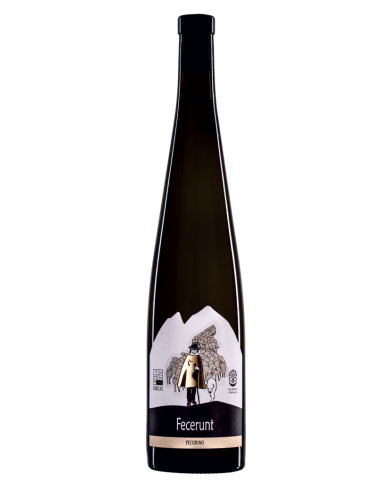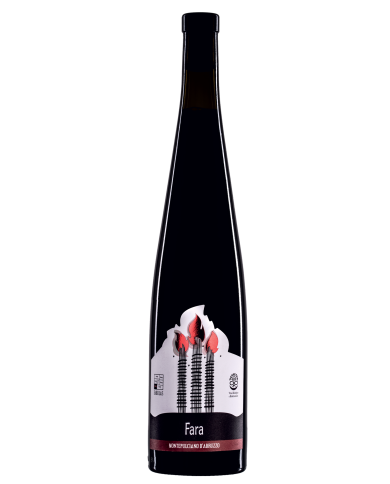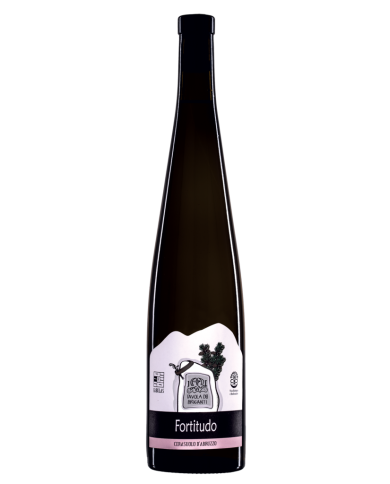The Metodo Classico Spumante Brut Fenaroli is a sparkling wine made from white berried grapes from the Citra winery. A Classic Method of great style and elegance
QROS├ł BRUT is the evolution of a cuv├®e based on Pinot noir and Chardonnay fermented in stainless steel and barrique. After tirage, the wine ages for over 42 months before disgorgement. The Pinot noir, grown on the morainic slopes, brings backbone and thickness as well as the characteristic scent of small red fruits, while the Chardonnay gives it fullness and roundness.
Intense straw yellow, bright with golden reflections. Slightly persistent perlage. Lively nose with fruity notes of ripe pears and apples and candied oranges. Light and enveloping on the palate, final citrus notes that linger.
In addition to the great classics of the Friuli area, always declined with skill and refinement, the Valentino Butussi farm also delights in the production of a bubble, creating a Spumante Brut made according to the Martinotti method. Punctual in presenting subtle and light aromas, which open to a well-defined and refreshing sip, this "Ribolla Gialla" is confirmed as an excellent companion for more informal aperitifs.
Born from clean and sustainable agriculture, respecting a landscape designed by culture and tradition, since 2010 the wines of L'Astore are certified "produced from organic grapes". Symbol of the Salento area in its ros├® vocation and in the old Alberelli di Negroamaro and Primitivo; the production enhances the ancient native vines such as Negroamaro, Malvasia Nera, Malvasia Bianca Antica, Susumaniello and Primitivo.
The elegance of a great classic method that remains 4 years on the lees, enhances the Pinot Noir and Chardonnay grapes grown on the Langa hills. The long stay on the lees leaves notes of bread crust in a complex, broad and persistent bouquet. Pleasantly dry, long, savory, it brightens the glass with a very fine and persistent perlage. Wine for aperitifs and throughout the meal.
There are only 100 bottles of this exceptional 2009 vintage classic method, which the company wanted to produce with its own best grapes, combining the elegance of Pinot Noir with the fragrance of Chardonnay and the softness of Meunier. "Madame Martis" is the successful synthesis of the precious elements that have always characterized the harmonious and decisive style of Maso Martis sparkling wines.
This bottle of the 2011 vintage is one of the very few produced by Maso Martis with a careful selection of its grapes, combining the elegance of Pinot Noir with the fragrance of Chardonnay and the softness of Meunier. 9 years of very long aging in the bottle are his style signature.
From the minute and persistent perlage, straw yellow color, intense. Elegant, clean, fruity and floral nose. Pleasantly flavourful citrine, harmonious with a slightly aromatic finish.
Fine and delicate sparkling wine, obtained from Glera Doc grapes vinified in white, traditionally sparkling in an autoclave for about two months, then filtered and cold bottled. Straw yellow in colour, it smells of wisteria and ripe apple; the taste is pleasant and distinctive, thanks to its lively acidity. It is ideal as an aperitif and to accompany light fish and white meat dishes.
The Spumante Ros├© Brut '1.R' by Lunae Bosoni is a sparkling wine obtained with the long charmat method, based on Vermentino Nero and Ciliegiolo grapes from Lunigiana, on the Ligurian border with Tuscany. It has a light and bright cherry pink color to the eye and expresses notes of fresh flowers, small berries and mixed citrus peel to the nose. On the palate it is fresh and harmonious, with a pleasant citrus aromatic finish and excellent flavor, slightly mineral.
Fine perlage. Color Straw yellow. Perfume Bouquet with fruity and floral aromas, accompanied by notes of crusty bread. Flavor On the palate the wine is fresh and balanced.
The desire to best represent the territory by vinifying proprietary grapes located in the best hills of the historic area of Valdobbiadene is a prerogative of Bortoluz. Fragrance of scents of white flowers, fruity hints of white peach, pear and green apple, best represent the type. As an aperitif or on cured meats and fresh cheeses.
Maison Jean-No├½l HATON's Cuv├®e Ros├® is a blend of 35% Pinot Meunier, 30% Chardonnay and 35% Pinot Noir, of which 10% is vinified as red wine.
Fine perlage. Color Straw yellow. Perfume Bouquet with fruity and floral aromas, accompanied by notes of crusty bread. Flavor On the palate the wine is fresh and balanced.
Denomination: Franciacorta DOCG Brut Nature. Grapes: Chardonnay, Pinot Blanc and Pinot Gris. Recommended pairings: First courses, fish main courses and white meats. Alcohol: 12.5% Vol. Format: 1.5 lt. Serving temperature: 4 - 6 ┬░C. Typology: Franciacorta.
Denomination: Franciacorta Docg Brut Nature. Grapes: Chardonnay, Pinot Bianco and Pinot Nero. Recommended pairings: Pasta, raw fish and main courses. Alcohol: 12% Vol. Format: 0.75 lt. Service temperature: 4-6┬░ C. Typology: Franciacorta.
Denomination: Prosecco DOC Ros├® Millesimato 2021 Brut. Grapes: Glera and Pinot Noir. Recommended pairings: Ideal as an aperitif and with light and fresh dishes such as risotto, pasta and fish-based dishes. Alcohol: 11% Vol. Format: 0.75 litres. Serving temperature: 6-7┬░C Typology: Prosecco Ros├®.
Denomination: Prosecco DOC Brut. Grapes: Glera Recommended pairings: Vegetable and seafood appetizers, seafood and fish dishes. Alcohol: 11% Vol. Format: 0.75 litres. Serving temperature: 4-6┬░C Typology: Prosecco
The grape variety chosen for the spumante base of Bolla d'Oro is the "Bombino Bianco". Its ancient origins probably date back to the challenge of Barletta and the Spaniards. It prefers deep, draining soils and is certainly one of the most interesting grapes for sparkling wine. Bolla D'oro is born from the application of the long charmat method, with a fermentation period of no less than 40 days sur lie which gives an absolutely unique and original roundness and fullness to the tasting (texture), enhanced by a fine and persistent perlage. Vin de fete, with a great personality and an intriguing bouquet in which notes of apricot and white peach predominate with white flowers (blossom) and dried fruit intruding on the finish.
Its aromatic richness is closely linked to the complexity of the volcanic soil. The evident mineral notes and the olfactory freshness are the synthesis of the extreme altitude of the vineyard. The pleasant aromatic presence of small fruits that give it a unique character. Crunchy and savory, a pleasant tingling envelops the palate and the fine creaminess gives a sublime pleasure
Tenuta La Chiusa's Brut sparkling wine is made only from Vermentino grapes, harvested in advance of those destined for still wine. The harvest at the end of August is followed by a soft pressing of the grapes and finally a slow fermentation at a controlled temperature. The sparkling process takes place with the Charmat method.
Johanniter is a white grape variety resistant to fungal diseases created from the cross between Riesling and Freiburg 589-54 several decades ago, in 1968 in Germany. The grapes are harvested towards the end of August. As soon as they arrive in the cellar, the bunches are softly pressed and the must is fermented in steel tanks. Once the base wine has been obtained, the second fermentation takes place, i.e. the sparkling process according to the Charmat Method. * resistant vine: it is a vine obtained from interspecific crossings aimed at lowering the susceptibility of the plant towards cryptogamic diseases (such as downy mildew and powdery mildew) and low temperatures. In this way a stronger plant is obtained and consequently viticulture becomes ethically and ecologically more sustainable both for man and for the environment. The resulting wines are healthier and qualitatively not inferior to the conventional ones we usually consume. In Italy, the cultivation of 10 resistant grape varieties is currently permitted. Colli del Soligo offers two, Souvignier Gris in the still wine version and Johanniter in the sparkling version. Taste to know. Don't miss the opportunity, taste it!
The Glera grapes used for the production of this sparkling wine come from vineyards located in the plains, on the outskirts of Treviso. The bunches are generally harvested in September at medium ripeness in order to preserve the acid component, which is important in the production of Prosecco Spumante. After the harvest, the grapes are subjected to a light pressing and a slow fermentation in steel tanks. Finally, the refermentation in autoclave (sparkling) follows the Charmat method.
Brut Sparkling Wines: A Complete Guide to Italian Sparkling Wines
Bubbles have always been associated with celebrations and special moments. Brut sparkling wines are one of the most loved and widespread types in Italy. In this comprehensive guide, we'll explore everything there is to know about Brut sparkling wines , from their production, tastes and pairings, to the best labels available on the market.
What is a Brut Sparkling Wine?
Brut sparkling wine is a sparkling wine characterized by a low amount of residual sugar. The term "Brut" refers to the level of sweetness of the wine, and in this case, indicates that the wine is dry, with less than 12 grams of residual sugar per litre. This makes it a very popular choice for those who prefer less sweet and more refreshing wines.
Method of Production
Brut sparkling wines are mainly produced using two methods: Classic Method and Charmat Method.
Classic method
The Classic Method is also known as the Traditional Method or Champenoise Method and is the method used to produce Champagne. In this process, the base wine ferments a second time in the bottle, creating natural bubbles and enriching the aromas and flavours. It is a long and complex method, but the result is a wine of great elegance and structure.
Charmat method
The Charmat Method, also known as the Italian Method, is a faster and more efficient process. The base wine ferments a second time in large stainless steel tanks, maintaining the freshness and fruitiness of the wine. This method is often used for younger and lighter sparkling wines.
Characteristics of Brut Sparkling Wines
Brut sparkling wines have several characteristics that make them unique and distinctive:
Lively acidity
The Bruts have a lively acidity that makes them fresh and inviting on the palate. This acidity balances out the lack of sweetness, creating a harmonious balance.
Fruity aromas
Brut sparkling wines offer a wide range of fruity aromas, such as green apple, citrus and white peach. These fresh and fruity aromas make these wines ideal as an aperitif or as an accompaniment to light dishes.
Fine and persistent bubbles
The bubbles of Brut sparkling wines are fine and persistent, creating a pleasant sensation of fizz in the mouth.
Versatility in Pairings
Thanks to their acidity and structure, Brut sparkling wines go well with a wide range of foods, from seafood to white meats, and are also perfect to be enjoyed alone in moments of celebration.
The Best Labels of Italian Brut Sparkling Wines
Italy boasts a large selection of sparkling Brut wines , produced in different regions of the country. Here are some of the best labels to try:
1. Ferrari Trento Brut
Produced in Alto Adige, Ferrari Trento Brut is one of the most renowned Italian sparkling wines. With its notes of green apple and bread crust, it is an elegant and refined wine.
2. Ca' del Bosco Cuv├®e Prestige Brut
From Lombardy comes the Ca' del Bosco Cuv├®e Prestige Brut, a structured and complex wine with aromas of citrus and yeast.
3. Berlucchi '61 Franciacorta Brut
Berlucchi '61 Franciacorta Brut is another unmissable Italian sparkling wine. With its freshness and creaminess, it is perfect for any occasion.
4. La Gioiosa Prosecco Superiore Brut
If you prefer a lighter option, the La Gioiosa Prosecco Superiore Brut from the Veneto region is an ideal choice. Delicate and aromatic, it is perfect for a cheerful toast.
The History of Brut Sparkling Wines
The tradition of sparkling wines in Italy has ancient roots and has its origins in ancient Rome. However, the success of Brut sparkling wines as we know them today is mainly linked to the Champagne region of France, where the Classic Method took hold in the 17th century. Since then, this style of production has spread throughout Italy, resulting in the delicious Brut sparkling wines that we love and appreciate today.
How to Store and Serve Brut Sparkling Wines
To fully enjoy the bubbles of Brut sparkling wines , it is essential to store and serve them correctly.
storage
Store Brut sparkling wines in a cool, dark place, away from direct sunlight and heat sources. Avoid sudden changes in temperature and keep them horizontal to keep the cap moist.
Service
To serve Brut sparkling wine at the right temperature, chill it in the refrigerator for at least two hours before opening it. The ideal serving temperature is between 6┬░C and 8┬░C. Pour the wine by tilting the glass at 45 degrees to preserve the bubbles as much as possible.
Brut sparkling wines represent the charm and elegance of Italian bubbles. With their lively acidity, fruity aromas and fine bubbles, they are a perfect choice for any celebration and special moment. Explore the vast selection of labels available and delight your guests with the refined taste of Brut sparkling wines .
Frequent questions
What is the difference between a Brut sparkling wine and an Extra Dry sparkling wine?
The main difference lies in the level of sweetness. A Brut sparkling wine is dry, while an Extra Dry is slightly sweeter.
How long does a bottle of Brut sparkling wine keep?
Most Brut sparkling wines are best kept for about 2-3 years from the date of production. However, some of them can age even better.
What are the main grape varieties used to produce Italian Brut sparkling wines?
Among the most used grape varieties are Chardonnay, Pinot Noir and Pinot Blanc, but there are many other regional varieties that are used.
Can I combine a Brut sparkling wine with a plate of red meat?
Yes, but it's better to opt for a more structured and complex Brut, like a Franciacorta or a Trentodoc.
What makes Italy such a renowned region for the production of sparkling wines?
Italy has a variety of terroirs and microclimates which allow for the cultivation of different grapes suitable for the production of high quality sparkling wines. The country's long winemaking tradition has also contributed to the development of refined production techniques.

